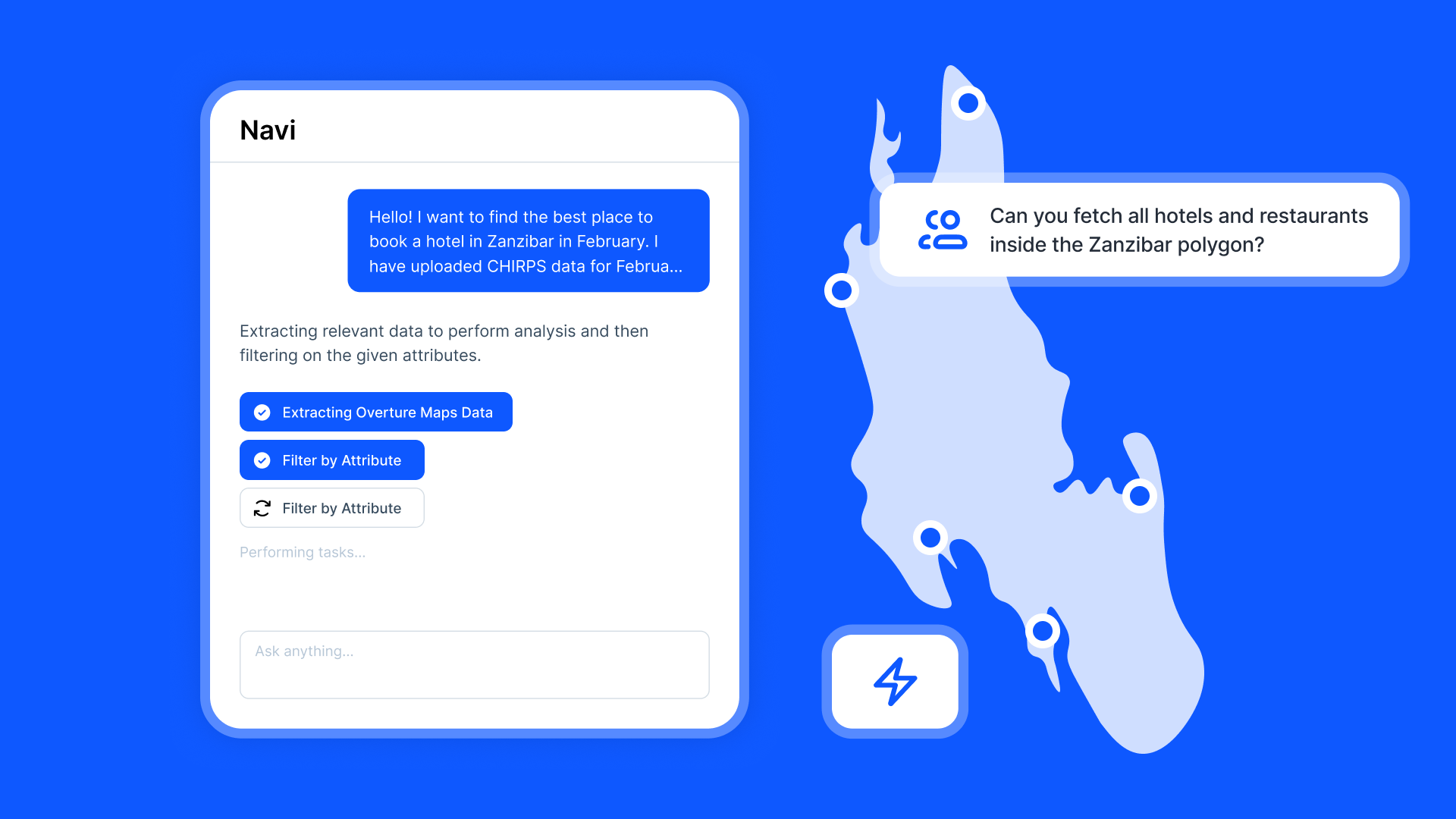OpenStreetMap (OSM) is free, open data gathered by a community of mappers that contribute and maintain data about roads, trails, buildings, cafés, addresses, and much more.
Now, we’re announcing an OSM Integration to the Atlas platform, making it very easy to query data directly in your maps.

Why should you use the OSM integration?
Data is one of the most crucial components when creating a map or performing spatial analysis. Yet, the process of searching and gathering data is one of the most challenging and time-consuming activities. Frequently, data exists in inconvenient formats, exists on foreign languages, or are unavailable in your specific geographical area of interest.
The OSM integration provides access to an extensive range of geographic data. From the small scale of neighborhood cafes and local trails to the larger scale of road networks and building outlines, this rich dataset can enhance your analytical capabilities immensely.
OSM is a community-driven project, which means it is freely available. By integrating OSM with Atlas, you can avoid the costly expenses associated with other commercial mapping services. It's an economical solution for startups and established businesses alike.
How does the OSM integration work?
One of the most challenging and time-consuming activities when working with spatial analysis is data gathering. Searching through the web for datasets with different formats, languages and geographical coverage.
Fortunately, the OSM integration let’s you query data with a single click of a button. It does not require any knowledge in data formats or spatial analysis.
To use the free OSM integration in your Atlas maps, follow these steps:
- Select the OSM Integration under Import in the right sidepanel
- (Optional) Retrieve specific data with quick queries
- (Optional) Adjust the area of interest (map extent is default)
- Select OSM tags to query and press the Query button
Use cases
Atlas makes it easy to overlay OSM data layers onto your existing maps, enabling you to focus more on analysis and less on data gathering.
Urban Planning and Development
Urban developers can leverage OSM integration to examine existing infrastructure and plan new developments with comprehensive geographic context. This can streamline planning processes and improve the accuracy of development projections.
Environmental Analysis
Environmental organizations can utilize the integration to study natural features and land use patterns, playing an integral part in conservation efforts and resource management.
Tourism and Hospitality
Businesses within the tourism and hospitality industry can use OSM integration to provide guests with detailed local maps, enhancing their visiting experience and aiding in navigation.
Retail Site Selection
Retailers can analyze geographic data to identify the best locations for new stores, based on factors such as population density, local amenities, and existing competitor locations.
Want to Try it Out?
We invite you to explore the power of the OpenStreetMap Integration. Whether you're a GIS expert, an environmental enthusiast, or a professional navigating urban development, this feature is here to revolutionize the way you interact with maps.
Welcome to a new era of map interaction!




